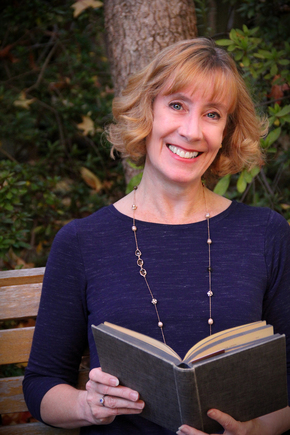
This novel has ordinary people responding to extraordinary circumstances using their courage, faith, fortitude, and a bit of hope.
The story shows how the Nazi occupation was different with Denmark. After the Germans occupy Denmark during WWII, they treat the country as a “model protectorate”. They didn’t enforce the same antisemitic laws as they did throughout Europe, allowing the Danes to self-govern and keeping the power of King Christian intact. For a while, things remained very much the same.
But when the plot fast forwards to 1943 everything changes. Baron Henrik Ahlefeldt exchanges his nobility for anonymity, so he can secretly row messages for the Danish Resistance across the waters to Sweden. He had three personas. Havman is the name chosen for helping the Danish Resistance. The “Merman” is based on the Hans Christian Anderson story The Little Mermaid. As a former Olympic rower, he volunteers to row vital intel across the Sound to the allies in Sweden. There is also Hemining chosen by Henrik to be the opposite of the Baron, portraying an illiterate silent ship worker.
As Hemining, he meets Dr. Else Jenkins, an American Physicist who decides to stay in Denmark even after the Nazi occupation. But she is also working for the resistance, helping to publish a resistance newspaper for her friend Dr. Laila Berend, a mathematician. Neither Else and Laila know Hemining’s identity and resistance activities, and he does not know of their resistance activities. This changes in 1943 after the Nazis decide to round up the Danish Jewish community. Together along with most of Denmark, they hide and then transport most of the Jews to safety in Sweden. They face the constant danger of getting arrested, tortured, and executed.
The themes of the book are
bravery, forgiveness, heartbreak, and horror along with the resilience of the
Danes. Sundin has a way of bringing to life the true history in a fictional
story.

Elise Cooper: Idea for the story?
Sarah Sundin: It came from historical research. Since this is my fifteenth WWII novel, I find new stories that piqued my interest through my research. I came across the amazing things Denmark did during the World War, especially how they rescued the Danish Jews.
EC: The Nazis were uncharacteristic the way they treated the Danes?
SS: My last book was set in France, previous ones set in Germany. Yet, how the Nazis treated the Danes goes against everything learned about the Nazis. When the Germans occupied Denmark, they made the country a “model protectorate.” They allowed the king and the government to remain in place, and they gave the Danes, as “fellow Aryans,” freedoms unheard of in the rest of Europe. For that reason, resistance was slow to develop in Denmark, but it did develop. In late 1943, the German crackdown on the Danish Jews dramatically fueled the resistance, and the various groups united to form the Freedom Council to coordinate their efforts, not only with each other but with the Allies.
EC: How would you describe Else?
SS: She is a nuclear physicist. She is very sweet natured and hates to confront people. She learns how to speak up for herself, developing a backbone.
EC: What role did Professor Mortensen play?
SS: He is a chauvinist pig, condescending and rude to her, treating her as more of a secretary than a scientist. He basically humiliated Else. He is arrogant and dismissive. He forces her to speak up to save her career, which means everything to her. She needs to learn the difference between being nice and kind. Niceness is giving in on everything whereas kindness is respecting someone and being considerate.
EC: The other physicist Bohr was a contrast to Mortensen?
SS: He is a real person, while Mortensen is fictional. I was so impressed with Bohr. He truly cared for those he worked with, nurturing them, and bringing out their brilliance. He used his brilliance to help others. Mortensen never cared about others. I chose to make Else a physicist after hearing about Nobel Laureate Niels Bohr’s institute in Copenhagen and the role Bohr played during the war.
EC: How would you describe Henrik?
SS: A nobleman who led the playboy life until the Nazi occupation. He was an Olympic rower and used those skills for the resistance, rowing to Sweden to give messages. Henrik’s character was inspired by Knud Christiansen, a Danish Olympic rower who rowed Jews to Sweden. He is bold and outspoken until after he took on his secret identity where he becomes a shipyard worker, appearing to be all muscle and very silent.
EC: What are the similarities and differences between Henrik, Havmand, and Hemining?
SS: He took on all three personas. Henrik was a nobleman with daddy issues. His father had high standards for his son, causing Henrik to rebel. Havmand was the rower, a code name. In Danish it means Merman. He took inspirations from The Little Mermaid story since she gives up her voice to have legs. He basically did the same thing, giving up his voice to be mobile for the resistance. Hemining was the ship worker. Else describes all three: Hemining was noble in character, Henrik noble in birth and upbring, and Havmand is noble in his deeds.
E: How would you describe them:
SS: Henrik was a leader, stubborn, direct, determined, protective, wants to be a warrior, and courageous.
Hemining was level-headed, responsible, considerate, thoughtful, hard-working, stubborn, direct, determined, protective, humble, and courageous.
Havmand was level-headed, responsible, considerate, stubborn, direct, determined, protective, humble, a warrior, and courageous.
EC: How would you describe the relationship between Hemining and Else?
SS: Henrik pretends to be someone else in her presence. He is trying to restrain himself to make sure he does not reveal his identity. She on the other hand is confronting her prejudices. She is a scientist who falls for someone who can barely read, Hemining. She is drawn to his kindness and decentness. She becomes more attractive to him and realizes that what is more important is someone’s character, not the letters after their name.
EC: What was the role of Leila in the book?
SS: She is spunky, fun, persistent, and a good foil for Else. She was Else’s best friend. She quits her job as a PHD mathematician to join the resistance. Leila is Jewish and needed the help of Else and Henrik to escape the Nazis. She symbolized in the story the persecution of the Jews and the courageous acts of resistance. The Danes managed to save almost all the Jews in Denmark by ferrying them across to Sweden. I wanted to tell these stories.
EC: Next book?
SS: It is coming out in February 2024 and set in London during the Blitz. A Dutch refugee is separated from her son who is sent to London as they both flee the Nazis. She enlists a BBC radio correspondent to help find the son. In the flames of the city a bunch of murders pop up. This one will be a mystery and thriller.
THANK YOU!!
